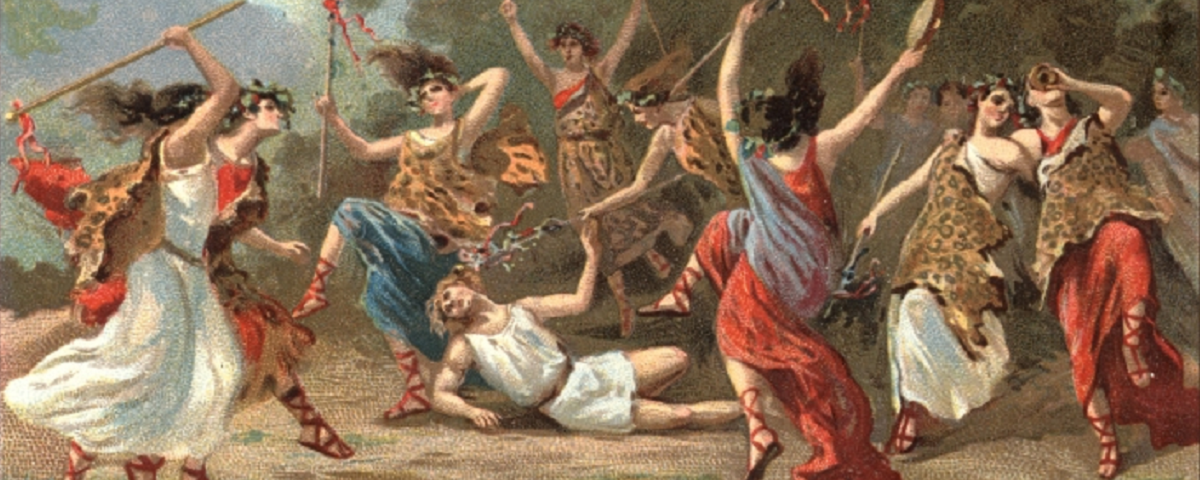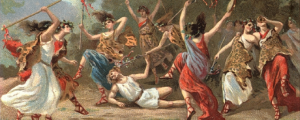
After The Death Of Art (Carl Raschke)
 Even if God is dead, art is not.
Even if God is dead, art is not.
And art is starting to come alive again through powerful new forms of collaborative partnerships between artists and commercial interests as part of a new movement that the Austrian inventors of the term have called “strategic art branding”.
Up until the late eighteenth century the social role of art was for the most part decorative or didactic.
The art of the Middle Ages was underwritten and promoted essentially as a visual catechism for the overwhelmingly illiterate masses as well as a form of privileged master craftsmanship aiding and abetting the self-glorification of clergy and rulers.
After the French Revolution and the ascendancy of the “Fourth Estate” that later came to be referred to as the “bourgeoisie”, art took on two contradictory roles.
On the one hand, it became the occasion for a self-congratulatory estheticism of the new industrial ruling classes who needed to direct their recently acquired wealth into the “finer things” of life in order to show their parity with the declining nobility, who previously had been the sole custodians of culture.
The philosophical preoccupation with “taste” and “genius” from the Napoleonic era up until the 1870s reflected this shift in curatorial responsibility.
On the other hand, the new forms of art patronage generated its own counter-culture, the Bohemian “avant-garde” with its militant slogan of épater le bourgeois (“shock the middle class”).
The irony, as the famous social satirist and literary gadfly Tom Wolfe noted in the 1980s, is that shock had now become humdrum and routine. At the same time, many art critics were declaring the death of the avant-garde.
Starting with Andy Warhol in the 1960s and culminating with Damien Hirst by the end of the millennium, the only way left to “shock” any longer was to turn art into something totally opposed to something historically it was not supposed to be – pure self-commodification.
After the crash of 2008 and the collapse of the speculative and increasingly self-referential global art market, where certain overhyped works, like debt swap derivatives, had become merely “special investment vehicles” that could vaporize as quickly as high-finance daytrades on Wall Street, a new wave of critics began to declare the “death of art” itself.
The irony, of course, is the death of art was accompanied by an explosion of serious practicing artists – professionally trained and dual career “creatives” – who, like adjunct professors, began to proliferate in the new no-growth and slow-growth economy.
If art investing was no longer the financial incentive it had once been, putting one’s money in privatized art academies and retail corporations with the tacit message of “art for everyone” became big business. Think Michael’s Stores.
Meanwhile, municipalities large and small began encouraging the growth of “arts districts” to attract largely for the purposes of “economic development” and “urban revitalization” a whole new generation of well-educated clientele.
Unfortunately, this new clientele knew little about the meaning and importance of art and could not rely on the art professionals to inform them, since the latter had become for the most part captive to the financialization and commodification of art works and to the academicization of the art elites themselves, particularly in America, where the prestige of schools attended and lists of degrees trumped almost completely the spirit of radical innovation and any re-visioning of the power and purpose of art itself.
As for the growing hip cadres of monthly visitors to art districts, the result has not been so much a growing and deepening appreciation of art, but an expanded opportunity to sample ever more foo-foo restaurants and microbreweries that eventually displace most of the struggling art galleries and studios driven out by meager income streams and the accelerating rents accompanying neighborhood renewal.
At the same time, all this conflicted and often financially “unsustainable” hustle-bustle has generated certain still low-key, but burgeoning trends among both “creatives” (as has become in some quarters the preferred term for artists) and savvy entrepreneurs and business people that promises to revitalize art itself along with real estate.
This past week saw a convening of business leaders, educators, and art professionals in York County, Pennsylvania to map out in broad-brush and tactical scope what they call “impact arts.”
The Cultural Alliance of York County, which sponsored the conference, publicizes its mission as improving “the quality of life” locally by “investing increasing funds in the creative community to increase its economic impact, making arts and culture an essential part of life through education and artistic excellence, strengthening the cultural sector, leading an arts and culture process, in collaboration with others, that enhances our community, building a regionally recognized cultural destination and brand.”
Overseas in Vienna, the historic and cultural heart of Central Europe, a marketing company has teamed up with a gallery owner to inaugurate the revolutionary initiative of strategic art branding.
Burn-in, a joint venture since March between the Vienna-based Erpe Gallery the Linz (Austria) marketing agency, calls itself a combination of “gallery and thought-factory”. It contracts with both businesses and organizations to develop what it calls “cultural value” to enhance their pragmatic or commercial missions and operations.
It fosters, according to its website, a “symbiosis and interdisciplinary collaboration between art, architecture, and marketing in their different roles.”
Burn-in does not merely exhibit art and feature specific artists with the aim of selling individual pieces to buyers for investment purposes or the visual enhancement of an existing, functional space, whether public or private.
It does not consider art to be an add-on to the affairs of the world, but part of the very DNA of social development, community self-identification, and economic productivity.
In other words, strategic art branding means the full-flowering of a recognizable and powerfully communicable esthetic component of any form of identity, whether it be a workspace, a marketplace, a municipality, a corporation, or a neighborhood.
Burn-in enlists teams of artists to enter into a co-operative and strongly consultative relationship with everyone affected by what goes on at a certain site, or as part of a larger set of events, to create a lasting and distinctive cultural signature for the enterprise itself.
Artists no longer create simply to “express themselves”, nor are they “commissioned” to some patron’s specific whims, but they join in a mutual venture of psychological and conceptual self-exploration that has socially transformative outcomes.
Financially, artists themselves participate in the process of, and benefits that flow , from this particular strategy of esthetic brand-making.
The word “branding” itself no longer has crassly commodifying overtones, even though the economic meaning remains at the forefront. It no longer connotes simply persuading someone to buy a product, but appreciably adding value to the system of production as well as upgrading the stock of human capital that goes into the manufacture of the product in the first place.
Burn-in is at the moment a step ahead of anything that has gone forward in the United States, though entrepreneurs and business development officials on this side of the pond, who have at minimum recognized the importance of the arts for urban “quality of life” enticements, might learn directly from them what seems to be a sustainable strategy of both financially and socially empowering artists themselves while opening new markets and incubating new businesses.
Some development insiders in the United States have taken the first steps in this direction by buying into the coworking movement that is focused on shared office space, technology, and home-grown expertise and mentoring, a trend which one entrepreneur described in Forbes magazine a year or so ago as “teaching corporate America a lot about how people interact, what makes them effective at creation and is really defining the future of how companies interact with each other on a deeper level.”
The Grove, a national coworking project that started in New Haven, Connecticut and is now going gang-busters on the west side of downtown Dallas, is looking to customize its successful consortial model by creating The Grove Studios.
The first studios recently opened in Connecticut, and the principals of its Dallas counterpart are looking to do much the same thing locally.
One of the challenges of cloning the coworking formula for “creatives” is that the familiar templates for business planning and market growth impressed routinely on would-be entrepreneurs does not automatically transfer into the art world.
It is too easily assumed that mixing aspiring fine artists with digital tech start-ups, like housing guppies and goldfish in the same tank, will yield uniform results.
Successful coworking, as all the literature emphasizes, is fueled by systematic and intentional co-mentoring, not just wiring up, and putting a roof with affordable rents over the heads of, well-intentioned dreamers. It also depends on cultivating internal team-building (something in which Burn-in, again, specializes) and aggressively expanding external connections with major supporters, partners, and benefactors.
In America right now there is something of a consensus that whatever is left of serious art should be dedicated to the general goals of “social justice” in much the same way that art between the wars saw itself as one of the keys to radical political action.
But too often such a sentiment can accomplish little more than providing a venue for “creatives” to express through their works what Lilie Chouliarki terms “ironic spectatorship” when it comes to real social dysfunction and injustice.
We are increasingly realizing that in this era of worldwide economic stagnation authentic social justice is not merely gestural, but demands economic improvement of everyone’s lives, including creatives.
The collaborative work of artists in improving spiritual and esthetic environments for the distressed and displaced as well as the working environment of corporate workers may indeed be the key to reviving the power and significance of art in the twenty-first century.
After the “death of art” we may be witnessing a resurrection of the critical social role of the artist, a role in which art is no longer simply created and enjoyed, but becomes the ultimate form of “human capital” that allows the real economy to flourish.
Carl Raschke is Professor of Religious Studies at the University of Denver, author of numerous books and a regular blogger for major online publications. He is also co-founder of the Global Art & Ideas Nexus and a principal along with his artist wife Sunny Raschke of Wingsoar.
Originally published June 29, 2014.
Tagged with: art, co-working, creative placemaking, creatives, social justice, society, The Grove
Comments & Reviews Cancel reply
This site uses Akismet to reduce spam. Learn how your comment data is processed.
